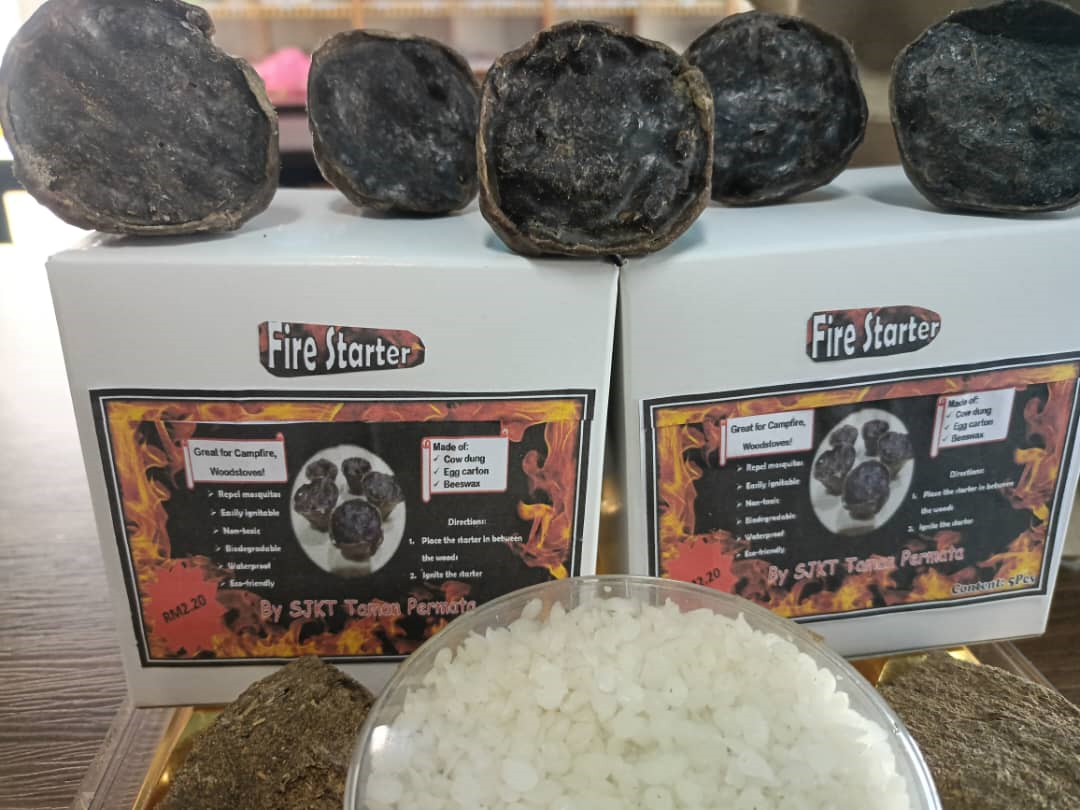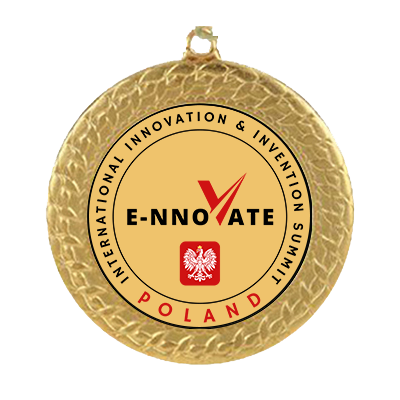
FIRE STARTER
Description: Fire Starter been produced using cow dung, egg carton and beeswax which burns with longer flame and long duration. It has waterproof capability.
Starting fires is not something we do often. Getting fire started is a big deal since it depends on the conditions. Hence, it is been a challenge on camping trips. There are many fire starters being used out there. Camphor, charcoal, paraffin soaked commercial fire starters, fossil fuel such as petrol are some of the fire starters being used commercially. However, each of it has its own benefits and drawbacks. Some fire starters takes time to start up fire, burn only for short period of time, fire goes off if fire starters get wet and emits chemical fume. In addition, commercial fire starters are non-biodegradable and not environmental friendly. Hence, transition from non-renewable resource commercial fire starters to renewable resource fire starter is needed. The innovation aim of this study is to produce Fire Starter by turning household waste products and cow dung into something that can be burnt with addition of beeswax. Egg cartons were stuffed with dried cow dung which mixed with beeswax. Once dried completely, it was cut into individual fire starters. Then, beeswax was melted and poured over individual fire starters and it is ready to be used. Comparison study was carried out to determine the characteristics of commercial fire starter and our Fire Starter. Our Fire Starter burns longer for several minutes which can be the best fire starter for camping. It took only less than 30 seconds to start up fire. That is the only fire starter that has waterproof capability. This product is kind to planet as it is made of waste and biomass which is biodegradable. In a way, zero waste fire starter reduces waste and utilizes biomass.
Organisation: SJKT TAMAN PERMATA
Innovator(s): Janice Jeremielle Roy Tiyagarajan, Reyshuven Jeevasuthan, Aathavan Jayakumar, Sujinthran Sathasivam, Pritashini Kalithas
Category: Environment
Country: Malaysia

